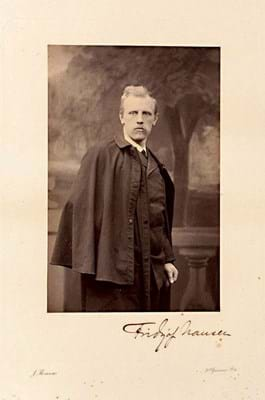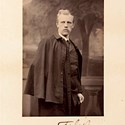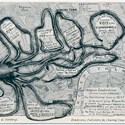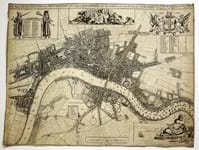The decision to move after 20 years from the decidedly different Victorian environs of the Olympia complex in West Kensington had been on the cards for several years.
Tony Fothergill, chairman of the ABA, which organises the event in collaboration with the International League of Antiquarian Booksellers (ILAB), says a growing sense that the Olympia venue was in the wrong location meant it was a matter of ‘when’, rather than ‘if’.
“We’ve always needed a ‘plan B’ with Olympia,” he says. “One of the main reasons we first moved there was the tie-in with the summer art and antiques fair in early June. But with changing dates, it left us pretty much as a sole event at that venue.”
Olympia suffers too from the absence of passing footfall, Fothergill says.
“We really felt that the hinterland of the venue was less and less conducive to an event of this type. It was difficult to get the public there in any larger numbers, year on year, mainly because of the location.”
It is also a question of control. “With Battersea we have the whole venue, whereas at Olympia we were only allotted the section we paid for. So in terms of flexibility and ability to grow the fair, Battersea offers us a lot more.”
Key is the chance to offer what the ABA believes is better value for money to exhibitors – particularly smaller booksellers who might not have been able to afford the Olympia rates. A subtle rebrand has occurred with the fair, which was once titled (in various ways) an ‘international antiquarian book’ event.
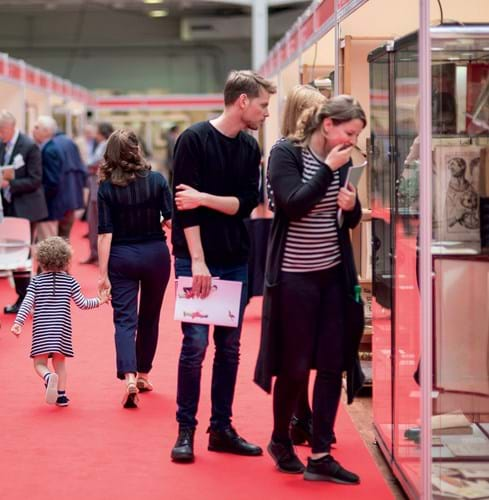
Appealing to a younger generation, the ABA fair in its previous guise at Olympia. This year, for its 61st staging, the event moves to Battersea Evolution.
The move to Battersea has already paid off in terms of exhibitor numbers, which are up this year to almost 180 compared with last, which totalled 165.
Fothergill says that’s partly down to cheaper stands – something he believes will be healthier for the fair itself. “You need to have the complete food chain there,” he says – by which he means more diversity in terms of merchandise and budgets.
‘Top of the food chain’ dealer Pom Harrington, of Peter Harrington Rare Books, and an ABA council member, agrees: “We need a fair for book buyers, where the entry point is actually very accessible to beginner collectors who may have £30, £40 or £50 to spend. There are also very serious dealers doing it, catering to a budget of half a million. It’s the full range.”
It is part of a wider recognition that the longevity of the British books and works on paper trade depends on more than its clutch of venerable brands. Fairs are becoming one of the chief ways the trade can sow seeds for the future. And they cannot be perceived as fusty, too masculine or old-fashioned.
Forward thinking
Harrington believes the Battersea move represents forward thinking. “Olympia has become about trade events,” he says, “whereas the events that go on at Battersea really are meant for the public. It has become a very established venue in the past few years.”
He highlights how the area is transforming into a major hub for business, shopping, housing and hospitality, as part of the regeneration of Battersea Power Station and Nine Elms. Tech giant Apple will open its European headquarters in 2021 across six floors of the landmark structure.
In what now seems a very prescient move, books and works on paper specialist Forum Auctions has based itself near Battersea’s Queenstown Road station since launching in 2016.
So even if some international exhibitors, who rarely venture south of the river, may initially ask: “Where on earth is Battersea?”, they won’t be thinking that way for long.
“I don’t think there is such a thing as a typical map buyer any more”
Tim Bryars, co-organiser of the London Map Fair, the oldest and largest specialist map fair in the world, has already seen his own event transformed thanks to a rethink and a relocation.
He says the move in 2008 from “trade-oriented monthly map fairs” to a single annual free-to-enter event at the Royal Geographical Society resulted in an “immediate surge in the number and diversity of visitors – the fair has subsequently thrived”.
A fair, says Bryars, “has to work for everyone. I don’t think there is such a thing as a typical map buyer any more. The [map] fair always has a real buzz with a high proportion of younger visitors, and a good gender balance. Not everyone is a map collector – yet. And that’s an important part of what the fair is about. At every fair since we moved to the RGS I’ve sold someone their first map.”
New audience
The once-packed calendar of events held by the Provincial Booksellers Fairs Association (PBFA) is now much slimmed down with around 50-60 regional events a year. Chairman Peter Moore is well aware of the need to reach a new audience outside the bibliophiles and committed collectors.
He cites the success of the relocation of The Norwich Book Fair two years ago to The Forum building in the middle of the city, home to the local library and the BBC. “We had the book fair placed so that everyone visiting that building had to walk through it, with the result that anyone going to the library, for example, was quite likely to stop at the fair. And in that case we got a much wider range of ages, and a more even balance of male and female visitors.”

'Tiggers don’t like honey' is the title of this original Winnie-the-Pooh drawing by EH Shepard (1879-1976). Dated 1961, it is priced at £47,500 from London dealer Peter Harrington Rare Books at the ABA fair in Battersea
Regular visitors to PBFA events are no longer expected to pay for entrance: the association now features free downloadable tickets on its website for all its fairs around the country. “It does inevitably affect the income of the event, but you have to get people in,” says Moore. “If you don’t get them in, they won’t buy books.” Bryars also cites free admission as one reason for the London Map Fair’s growth in popularity.
A wide range of pricing – as the ABA has referenced – is key. Fairs are often promoted via their aspirational trophy objects – but often the reality can be more inclusive.
Helen Rosslyn, director of the London Original Print Fair, says reasonable prices are crucial for drawing in new buyers. “Watching people visit the fair for the first time is wonderful, as they realise you can buy an original artwork by Picasso or Matisse for under £1000. I don’t think I have ever come across a first-time visitor who has come out of the fair saying they will not come back.”
The extra mile
Fair organisers – some of whom operate on a voluntary basis – have to work harder for their customers in today’s competitive market. Rosslyn has certainly gone the extra mile for 2018.
“This year I am writing a book called A Buyer’s Guide to Prints which will be on sale at the fair, based on all the questions I have been asked over the 30 years I have run it. The aim echoes that of the fair in demonstrating that prints can provide a wonderful and accessible way into collecting original art.”
The print fair is also making use of the talent at its disposal. “Many of the current Royal Academicians are printmakers,” says Rosslyn, “so we are lucky to be able to run lots of talks and demonstrations by artists. This year we are having a demonstration by a visiting Japanese woodblock printer to show how Hokusai printed The Great Wave.”
“Millennials are suddenly looking at books and thinking ‘cool!’”
The clear mood of optimism is a useful corrective to the gloomy predictions that have swirled around the trade for some years: with some saying the digital age would relegate the world of printed material – and their sellers – to an inevitable obsolescence. In fact, as far as the younger generation is concerned, there seems to have been an unexpected upswing in interest.
Rather in the way millennials have rediscovered vinyl records, Harrington says there is “an increased interest” from younger people in books as beautiful, tactile, meaningful objects. “Millennials are suddenly looking at books and thinking ‘cool!’,” he says. “From an employer point of view, we’ve had so much more interest from graduates wanting to work in a rare bookshop. Today I’ve got about 12 people under 30 working here.”
Fothergill, too, is upbeat. “I would say that the number of young people coming into the trade is much higher than it has been in any time that I’ve known.”
Fothergill, too, is upbeat. “I would say that the number of young people coming into the trade is much higher than it has been in any time that I’ve known.”
Some surveys suggest this increase in publishers’ print sales is down to children preferring physical books to e-readers. Both Moore and Harrington believe this augurs well for the future of the rare book trade, even if it becomes leaner and more concentrated overall.
Fothergill also points out that an online business doesn’t require the investment of bricks and mortar, as was the case when he first started out. The simplicity and economy of setting up a business is particularly beneficial to young, entrylevel dealers. It means they can invest in books and focus their networking around the fairs.
Personal service
That opportunity to meet, in real life, your online buyer or seller, is one reason the digital age has heightened, rather than lessened, the relevance of a fair. And the online marketplace, aside from those irksome issues of authenticity and trust, isn’t quite as comprehensive as one might think anyway.
Fothergill says there is a mistaken perception that “everything you can see at a book fair you can see online. Vast amounts of books at the book fair won’t be visible on the net.” And, of course, all the fairs vet their exhibitors, so the items are as described, and there is a point of recourse for the buyer if something goes wrong with a sale.
But perhaps the most valuable aspect of a fair is the single magic ingredient that drives the entire business of collecting and dealing: serendipity.
As Harrington says: “As a dealer, I can tell you that the great thing about a book fair is what you don’t expect to find, it’s what you’re not looking for. And that’s really the whole point of a book fair these days. It’s to find what you can’t look for online, because you’ve never looked for it, you just come across it.”
CONTACTS:


